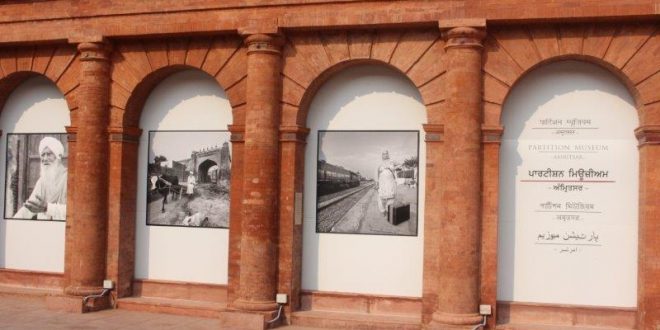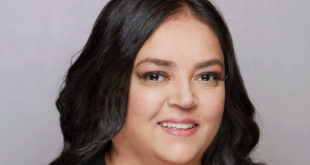By Surbhi Gogia
The Partition Museum in Amritsar is dedicated to millions impacted in the largest migration in human history and is a space of reconciliation
August 1947 was the watershed year in the history of Indian sub-continent. If on one hand India as a nation celebrated its freedom from more than 200 years of British colonization, on the other hand it witnessed the bloodiest and horrific partition, when the British ruled India was partitioned into two nation states- Hindu majority India and Muslim majority Pakistan.

Law and order broke down and massacre and looting started as families left their homeland to trudge across to where their ‘new nation’ was. Millions of lives were uprooted, thousands lost. Women were abducted, abused and killed along with children, born and unborn. Families abandoned their ancestral properties and crossed boundaries forced to find a new life as refugees. Back and forth across Punjab and Bengal went the human flow with much misery. Millions of Muslims trekked to West and East Pakistan (the latter now known as Bangladesh) while millions of Hindus and Sikhs headed in the opposite direction.
From that year onwards both the nations started celebrating their Independence day however no one recorded and stored the wounds of partition for the coming generations. In 2017 a group of people, belonging to the families that suffered during the partition, joined hands to commemorate millions of people who suffered and founded the Partition Museum. The museum uses multi-media exhibits including oral histories, archival footage, historical newspapers, official files, as well as personal documents and objects carried by individuals and families who lived through the Partition to tell the story. It also aims to become a comprehensive archive on the Partition. The Canadian Prime Minister, Justin Trudeau too visited the museum along with five Cabinet Ministers and 15 Members of Parliament on his recent visit to India. He was accompanied by ministers Harjit Sajjan, Navdeep Bains, Bardish Chagger, Kirsty Duncan,and Amarjeet Sohi. Sharing his thoughts in partition he said, “to think of the lives torn apart, the violence and loss…We need to remember that it’s always easy to divide people. It’s much more difficult but it’s the only path to bring people together in love and understanding. We have to be ever vigilant that that is what we are putting into the world and that is the way we are building our future.”
Desi Today talked to Mallika Ahluwalia, CEO, Curator and one of the founders of the museum to find out some interesting facts and what it offers to its visitors. When you visit India next time, make sure put the museum into your itinerary!
DT: Please tell us the idea behind the partition museum? Like what were the reasons to establish it and how did you become part of it?
Mallika : All four founders, of which I am one, come from Partition families. The Museum was founded by us because of a very stark realization that we were losing the generation that had witnessed Partition– and that seventy years after the event there was no museum or memorial anywhere in the world to an event that shaped so many millions. Given the age of Partition survivors, we felt it was very important, that in their lifetime, as many of that generation who are with us, can know that their experience has been heard and acknowledged.
We were very clear early on that our main goal was to create this as a People’s Museum, and that focus on telling the stories of all the millions of families has been a guiding force throughout the Museum.
DT: When was it opened? Is there any entry fee?
Mallika: The Partition Museum, located in the Town Hall in Amritsar, India opened with a curtain raiser exhibition covering four galleries in October 2016 and all fifteen galleries in August 2017 to commemorate the 70th anniversary of Partition. It has 17,000 square feet of space. It is the world’s first Museum or memorial to remember the millions impacted in the largest mass migration in human history.
The Museum is run by a registered non-profit Trust, and has been set up by the generous donations of people who have believed in it.
The entry fee is around CAD 5, which is used towards the operations and maintenance of the Museum. As a non-profit initiative, all funds raised through ticketing help further the aims of the Museum. The museum is open from 10: 00 am to 6:00 pm Tuesday through Sunday. It is closed on Mondays, 26 January, 15 August, and 2 October.
DT: What are its major attractions and collections?
Mallika: The Partition Museum has been set up as a People’s Museum, where the main objective is to tell the stories of those millions of people who were impacted. We are using people’s own voices through oral histories, their personal artifacts, their letters, photographs and documents to tell history. For example, many galleries contain objects that refugees carried with them when they travelled; some items that have been donated to us include an embroidered coat that someone carried because it was their most prized possession, and a water pot that helped a family gather water during their time at a refugee camp. Each of these objects tells the experience of the family more poignantly and fully than any history textbook ever could.
The Museum uses multiple different mediums to create a world-class engaging experience for the visitor. This includes oral histories playing on video, a soundscape in each gallery, original artefacts donated by refugees, newspapers and magazines, photographs showing the migration and camps, letters written by refugees, government documents, and especially created art installations. What we have tried to do is create an immersive experience—where the visitor can come and get a multi-sensory experience of what Partition meant for all those millions of people who were impacted. It will be quite different from other Museums in India because a strong narrative is present throughout the Museum, so the visitor goes on a journey through time.
DT: Please give some brief history behind the partition so?
Mallika: The Partition of India in 1947 caused the largest migration in human history; no one knows exactly how many people lost their homes but estimates go up to 18 million people. No one knows how many lost their lives but estimates vary from 200,000 to 2 million people. Yet, almost 70 years after the event, there was a severe lacuna that no museum existed anywhere in the world to remember and commemorate all those who lost their lives or had to leave their homes behind- till the Partition Museum, Amritsar was set up.
DT: It uses oral histories too, who were the people approached for it?
Mallika: Because we are a People’s Museum, using people’s own voices was very important, so you hear history first-hand from someone who lived through it what their experience was. This not only helps the visitor really understand the enormity of the humanitarian tragedy, but it helps create a space for all those impacted to have their stories heard and acknowledged.
We have been recording oral histories across India for the last three years, and have tried to ensure that voices from all segments are heard. Therefore, the Museum includes a whole section on the experiences of women at Partition. It includes voices from both urban and rural areas, from the poor and the rich, from Punjab and Bengal and Sindh etc.– Partition did not impact just any one community or socio-economic group, it left no one untouched in the affected provinces.
 DT: Any particular heart-wrenching story that you came across and would like to share with our readers?
DT: Any particular heart-wrenching story that you came across and would like to share with our readers?
Mallika: Two of the most poignant objects in the Museum are a Phulkari coat and a briefcase.
Pritam Kaur was 22 in 1947. When the violence started flaring up, Pritam Kaur’s family put her on a train to Amritsar with her two-year-old brother. After reaching the railway station, she made her way to the closest refugee camp. This phulkari coat was one of the few possessions that Pritam Kaur brought with her, not because it was particularly practical as she fled, but perhaps because it was a reminder of happier days. She had been arranged to be married at the time of Partition to a gentleman names Bhagwan Singh Maini, but in the chaos of the time, she lost contact with her fiancé’s family. As fate would have it, Bhagwan Singh also reached the same Amritsar refugee camp with his aged mother. He had unfortunately lost two siblings to the violence on the way.
It was in the long winding queue for food where hungry, weary, desolate refugees stood for hours, that Bhagwan Singh and Pritam Kaur met again. Viewing it perhaps as destiny, the couple got married in a simple ceremony in March 1948. The leather briefcase had been brought across by Bhagwan Singh with his degrees and as well as his property claim papers. Property that he could of course never return to.
This coat and briefcase lie together currently in our museum as a testimony to the life they lost, and found, together.
DT: How can Canadian Punjabis involve in the museum and how can a visit to this museum add significance and importance to their visit?
We are very keen to have the strong Punjabi community in Canada contribute and be involved with the Museum. The Museum pays a tribute to the resilience of the human spirit that never gives up and tries to rebuild life no matter what the circumstances; these are values that the Canadian Punjabis have shown time and again. This community has also demonstrated time and again their close ties with their homeland.
Partition no doubt affected the families of all Punjabis in Canada- whether through losing their home, a loved one, or seeing their entire village/town uprooted and in a storm. Many of their families would have fled violence; others would have provided succour to refugees.
We hope that the Punjabi diaspora will support us in two ways- first, because this Museum is being entirely set up through donations, even a small donation will go a long way to ensuring that the first and only memorial and Museum to Partition can continue to reach out to evermore families and improve the exhibitions and collections, second, we hope that we can record the stories of these families before they are lost forever and that some may contribute family artefacts to the Museum. We hope that your readership will reach out to us at ourhistory@partitionmuseum.org and help support this People’s Museum.
No doubt all Canadian Punjabis would come to pay homage at Darbar Sahib. We are located a mere 5-7 minute walk from the holy Golden Temple, along the newly renovated Heritage Plaza. Therefore, we hope that they will also come visit the Museum. It has already gotten critical acclaim, and has been listed in the top 18 places to visit in 2018 by National Geographic Traveller India, it has won an excellence award from Condé Nast Traveller, and all visitors who come leave moved and overwhelmed learning about what their parents and grandparents lived through. Yet, despite the difficult topic, they don’t leave despondent, because the last gallery is the Gallery of Hope, which is a forward-looking contemporary gallery, which speaks of love and peace and the strength of our families.
 Desi Today Magazine
Desi Today Magazine




